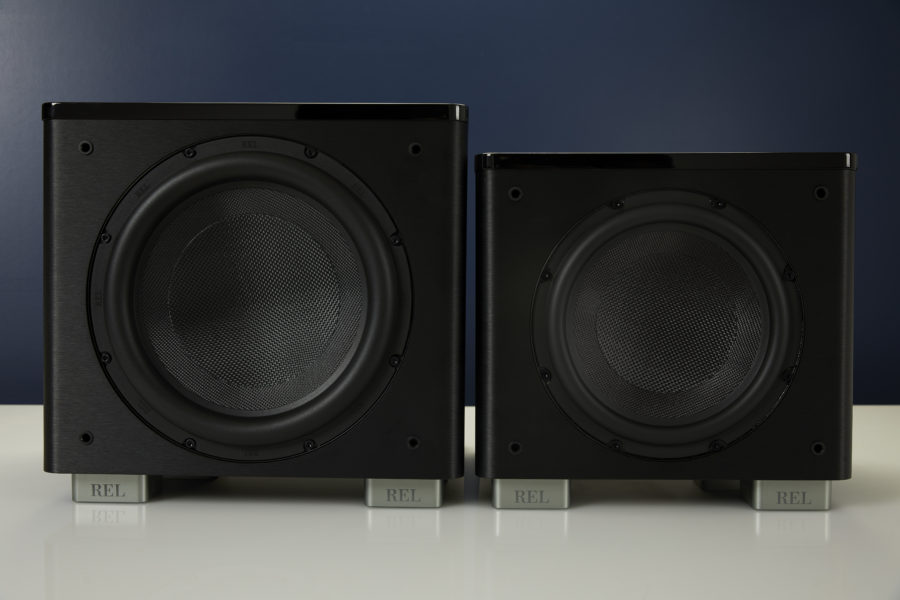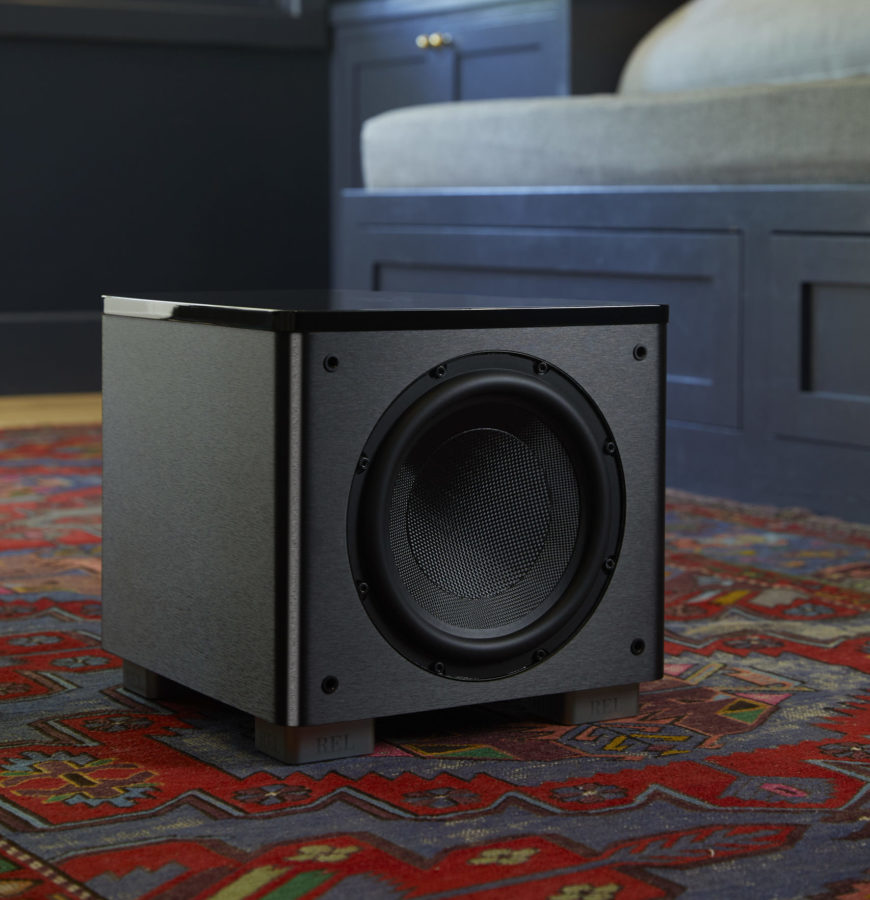Blog
The Making of REL’s HT/1205 MKII and HT/1003 MKII
Good design requires making a few parts better. Great design requires great honesty and the willingness to make everything better. –Hunter REL Acoustics Ltd.

It is rare for a new model—let alone a new model from an entirely new range—to take over the best-seller title here at REL. But, the original HT/1205 became a best-seller in just its third year. The original version of Serie HT was purely a home theatre line with an emphasis on raw output coupled with exceptional speed, offered up at bargain prices. Its styling was fine for the category, but not anything that could compete with more finely wrought lines like our Serie T/x or Serie S.
For the MKII versions, we had our work cut out for us with the original HT/1205 already a bruiser in this competitive segment and the HT/1003 seen as loud in the middle weight class; they were spot on for this highly competitive category. Naturally, we decided to increase the output massively in our new offering.
The originals were fine for music but tilted solidly toward theatre. However, the newest range is far superior to the originals for music while still being beasts in home theatre. In fact, they are so good in home theatre that the whole line ought to be renamed “Predator.”
Let’s dive into the specifics to see how we pulled off the new HT line. Specifically, how did we manage to raise the output another fifty percent in the HT/1205 MKII? How, exactly, did we double the HT/1003 MKII’s output compared to the original HT/1003?

As always, we started with the driver because anything else we do will be for naught if the driver is not up to the task. First, we stiffened the entire cone structure because we decided early on that our newest amp would have a more robust 500 Watts with more clean headroom to deliver greater output. When big power hits, the cone’s structure must be stiffer so it doesn’t flex under duress. So, the basic cone’s glass fibre is made from a coarser weave that is thicker and tougher. Then we selected a similarly thick, rugged, ultra-lightweight pure carbon fibre material for the crucial centre cap. This part is responsible for maintaining the stiffness that is so critical to our designs; if the cone flexes, we lose energy, and we lose the instantaneous reactions so critical to both theatre and music. Of course, we beefed up all the suspension parts to handle this goodness.
Then we dug deep into our filter sets, beginning by asking an important question: what does an explosion sound like? Is there anything we can do to more accurately replicate the sound of an explosion? I went looking for an old customer of mine who was a sound engineer in Hollywood. He explained that the hardest part of recording explosions was capturing the initial clap, which is a metallic-shrieking-BANG! It is followed by the heavier, louder boom immediately afterward. “Get it right,” he said, “and the back half of the explosion is easy.” So, I spent four days listening to explosions. After a while, I could hear the positive effect we were searching for. The key to getting that perfect combination of limitless, explosive qualities was to move the secondary filter in our subwoofers higher, which is used to eliminate things like violins and soprano singers from bleeding through our gentle, fast main filters on a traditional REL. As soon as we raised it another 150Hz higher, it all came together.
PerfectFilters Pt. II: With that done, we set about fine-tuning our PerfectFilters™. These elevate frequencies in the deepest bass. Fine-tuning these resulted in richer, firmer bass that benefits everything; music and movies sound far richer, more relaxed, and more capable for all types of signals.
Finally, we chose to use an analogue subsonic filter that starts as low as 8 Hz to eliminate the excess infrabass that can damage drivers and amps alike down below 20 Hz.
By this point, we were excited to find out what this could do for max output levels. On our first pass on the HT/1003 MKII, we recorded +6 dB. We had no time to tweak our LimitLess™ limiters, which are named this because they act less like a brick wall and more like a perfectly tuned bungee cord. Within a few weeks of tuning, we had 10+ dB improvement in output over the older 1003.

HT/1003 MKII is an insane improvement over the original model: one that no one who heard it would describe as lacking in output. This puts it firmly in the company of units that retail for $1,000 to $1,500 (£1,000-1,500). Similarly, the HT/1205MKII racked up a +6dB improvement. Why not +10 dB like the 1003? Chalk it up to our doing a better job finding the limits on the old 1205. Both versions sound so much better while doing their jobs. It is firmer, calmer, yet much more explosive. Also, it is so much more expensive-sounding with a higher resolution and detail. And wait until you hear these under the appropriate Klipsch models. The combination is insanely impressive.
So, to develop the new model, we made a clear-eyed list of everything we felt we could do better. In the new HT/1205 MKII and 1003 MKII, we upgraded everything in both units; the drivers were massively upgraded. The amps were built to our standard by a true Tier One supplier. Out power supplies and output sections were all significantly upgraded. We applied the PerfectFilters design we learned from the Serie S and T/x were applied to these new HTs. This was a huge body of work, a complete makeover and upgrade of all the styling elements as well as the fit and finish, making these new models so much more finely wrought. It is no surprise that they wound up weighing more as well.
The new HT MKII models are superior in every way. They make theatre come alive in a way that normally, only very expensive subwoofers can. Paradoxically, these improvements make them far better musical instruments. This just proves that, when you’re not afraid to improve everything, everything gets better. Our newest model is finer with more expressiveness. Justin, Alex, and I are so proud of these. Here’s hoping you enjoy them as much as we enjoyed designing them.










